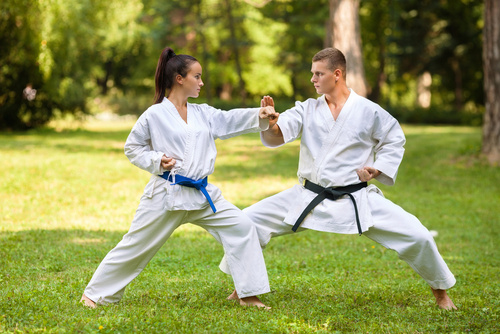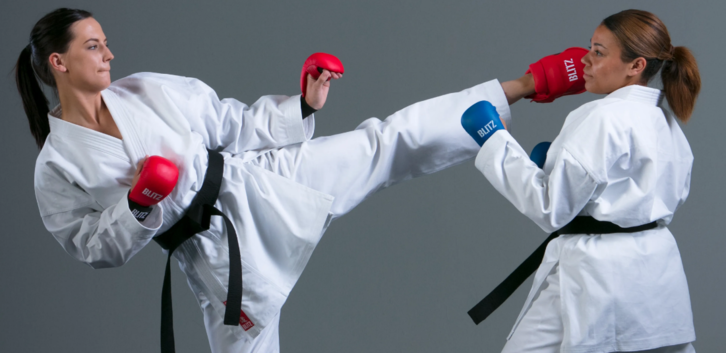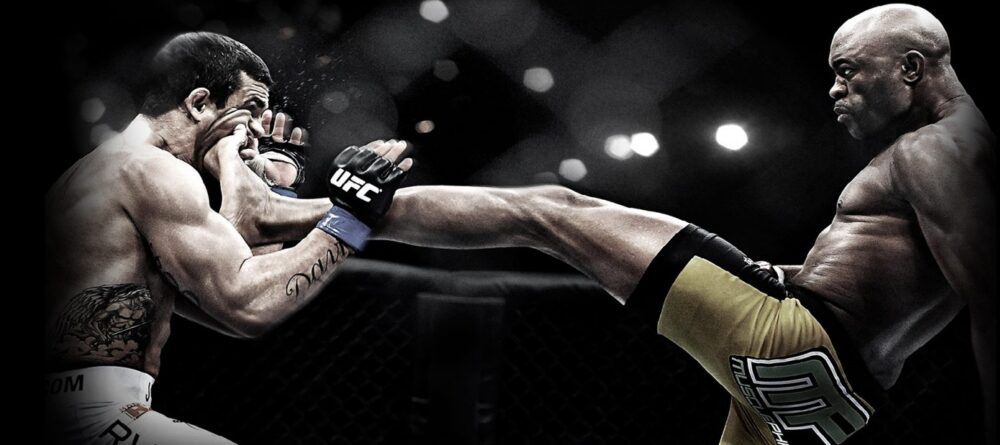Out of the many styles of martial arts a common question is always asked; is karate good for self defense? The reason for this popular question is because people see karate practitioners doing Kata and think that’s what karate is all about.
Continue readingCategory Archives: Karate
What Age Should a Child Start Karate?
There comes a time when parents want to explore fun activities to enroll their child or children into. One fun activity that comes to mind is Karate.
But at what age should a child start martial arts? Most karate schools accept children as young as 3 years old.
At 3 your child will learn basic kick and punch techniques, and also get lots of cardio through running, jumping and doing other exercises that builds endurance. It’s a fun experience!
They won’t learn anything more until they are 4 or 5 years old. At that age they can slightly grasp the concept of striking, blocking and other movements.
.
Is karate good for children?
Karate is a great sport to get your child into. It teaches discipline, self awareness, group development, fitness, and to have fun.
After enrolling your child there are a few things you want to make sure of. Here are a few simple tips to follow.
Always supervise your children when they are practicing karate – No matter how experienced they are, accidents can and will happen. Never drop your young child off and leave them unsupervised. Your child is not old enough to fend for themselves.
Make sure to be there to help them if something goes wrong, and be sure to discuss your child’s karate training with your other parents so everyone is on the same page.
Teach them the importance of safety – Just like with any sport or activity, karate should always be done in a safe and supervised environment.
Discuss the risks and benefits of practicing karate with your child before starting their training so they know what to expect.
Encourage all forms of physical activity – Physical activity is important for both children and adults, and karate is no exception.
By encouraging your child to participate in other forms of physical activity, you are encouraging them to stay healthy and active overall.
Hopefully, these tips will help you answer some of your questions about starting a child’s karate training safely and effectively!
Age limit in karate for Olympics
Currently there are no age limits to participate in the Olympics except those set by the international Federations.
This is the international sports bodies that govern specific sports, not the International Olympic Committee.
Specifically, Rule 42 of the Olympic Charter states: “There may be no age limit for competitors in the Olympic Games other than as prescribed in the competition rules of an IF as approved by the IOC Executive Board.”
Some IFs do impose age limits while others don’t. Currently there are age limits set for Fencing (13), Bobsled and Taekwondo (14), cycling, wrestling, and weightlifting (17), and for marathons (20).
The Olypics are being more cautious now, and considering enforcing an age limit – since news broke that Kamila Valieva, a 15-year-old Russian figure skater, had tested positive for the banned substance Trimetazidine.
Karate Lessons For White Belts
Karate lessons for white belts are essential in getting new students acquainted with this type of martial arts. If you’re a white belt looking to up your game, you’re in for an fun time.
That’s because the karate world is full of skilled practitioners who are ready and willing to teach those new to the art.
In this article, I’ll provide you with some lessons on what to expect as a white belt in Karate, and other tips you should know.
Armed with these information, your journey as a white belt will be a lot smoother, and hopefully you can share this knowledge with your friends who are taking lessons with you.
Also read:
What do you learn as a white belt in karate?
The white belt is the first ranked belt in karate. It symbolizes the beginning of a person’s will to acquire the skills of this form of martial arts.
You can liken a white belt to a piece of white paper allowing anything to be written on it.
It also symbolizes a start at something new and prepares you for all the challenges that lie ahead. You should not only use this philosophy in karate but in life as well.
In fact, all the philosophies you learn in karate you should apply them to your life, because it will give you a better understanding of yourself, and the world around you.
What you’ll learn as a white belt:
- How to tie your Gi (uniform) with your belt
- Proper fighting stance
- Balance and control of your position
- Proper coordination
- Correct form when executing a move
- How to have speed with correct form
- Learn reflexes against an opponent’s attack
- Strengthening your power
- How to properly do the techniques (kick, punch, block, knee, escape etc)
How many classes are in white belt?
There are a minimum of 15 classes that teach you the basics of karate at the beginner level. it takes about 4-6 months for you to graduate from white belt to yellow belt – which is the next belt level.

How many stripes do you get on a white belt?
Many styles of karate offer stipes on their belts. This signifies the students progress under a particular belt. This means that not all belts of the same color have the same level of training.
So for example a student you has just received his green belt will not have striped on it. But a student who has been a green belt for 5 months, may have a stripe on his belt.
The more stipes on the belt – the more experience and knowledge the student has. Most styles of karate have up to four stripes on one belt.
Most Dangerous Submissions in Jiu Jitsu
How long does it take to get from white to black belt?
It all depends on the time and effort you put in. Before you receive a new belt you have to show that you’re progressing with the current belt that you have, and you have sound knowledge of the techniques being taught.
Please understand that your sensei (teacher) will not allow you to take the exam to move on to the next belt if he thinks you are not ready.
If you are granted a test, you have to pass it in order to achieve your next belt. If you come to class 2-3 times a week you can earn your black belt with six to ten years.
It’s important for me to tell you that you shouldn’t be practicing karate to achieve belts.
You should be practicing karate to learn the art and philosophy of karate, to better yourself as a human being, to be of service to others, and to inspire those who need motivation in life.
If you’re only taking karate to achieve a black belt as quickly as you can then you miss the point in taking karate.
You sell yourself short on experiencing something on a mental, spiritual and physical level. Achieving belts should not be your main focus in karate.
It is a biproduct of first showing your growth, skills, proper technique, and comprehension of the philosophies within the karate system.
Ezekiel Choke From Bottom Mount
Karate white belt requirements
As I mentioned earlier the white belt is the first level belt you earn in karate. In order to receive this belt you have to pass a test. The test will be based on the techniques you’ve learned up to that point.
Other requirements you need before a white belt test is granted to you is to be on time for training, be courteous and helpful to other students, practice hard, pay attention to instructions, have a positive attitude, and always be respectful.

Karate white belt test
In an exam to receive your white belt all you’ll be doing is showcasing what you’ve learned up to that point. It’s not difficult if you know your stuff and you’ve been practicing.
The one thing that gets people is nervousness. Some people are so overwhelmed with nerves that they forget some moves, or perform it incorrectly.
Sometimes the nerves are so bad that they perform a move unbalanced. The nerves gives them the shakes. To overcome this it’s good to close your eyes, take deep breaths, and calm yourself down.
Put yourself at ease before you even enter the dojo. You may be first in line to do the exam so it’s good to be prepared mentally for it.
For the exam you will exhibit the stances, punches, kicks, blocks, locks that you’ve learned in class. There will be nothing outside the ordinary.
What color belt comes after white?
After you’ve earned the white belt the next belt to earn is yellow. The yellow belt shows that you’ve completed basic training and now in the process of learning skills and techniques one level above that.
If you show that you have a good grasp on the techniques you’ve learned as a yellow belt, in a few months, if your sensei sees fit – you will earn an orange stripe.
This will proceed your next belt which will be an orange belt. Your orange stripe will be awarded to you only if you show competence in skill and technique.
Your sensei will also consider attendance and positive attitude towards learning and interaction with your fellow class mates.
Do Martial Arts Actually Work?
Is Taekwon-do better than Karate?
There is a difference between Taekwondo and Karate in style and technique. You can choose what’s best for you depending on the information you are given.
Taekwondo is very limited. Your primary function of movement and technique are kicks. Even in Taekwondo tournaments you can use punches to the face – only to the body.
And even punches are not worth much points. In Taekwondo kicks are king and everything else is essentially non existent.
Karate on the other hand is more full range. It’s more balanced, had full-body moves, and incorporates all your limbs into a fight.
In karate you can use pretty much all aspects of your body to strike your opponent and defend yourself. Some styles of karate even use joint locks and ground submissions.
Overall, I think karate would be better than Taekwondo because it teaches you to use more body parts as weapons to attack and defend yourself. Ultimately the choice is up to you. Try and find out.
What does Dan mean in karate?
Shodan or Dan for short is commonly referred to as a step, stage, or degree. To be more specific it means first degree. It’s the lowest black belt degree is Japanese karate.
There are a total of 10 Dan in specific styles of karate. In order to obtain a certification for each rank, you must fulfill the certain requirements and complete an exam.
What is a karate master called?
A karate master is called a sensei. You can see this person as a coach, teacher or instructor. It means a teacher because a teacher is one who proceeds their students.
A sensei has more experience and skills than you, and because of that is able to teach and instruct you on your karate lessons.
What are the karate belt levels?
Officially, there are 9 karate belt levels. As you progress to each level the training will become more difficult. This will make you more prepared for competitions or conflicts that may arise on the streets.
The belt rankings/levels are below:
- White
- Yellow
- Orange
- Green
- Blue
- Purple
- Brown
- Red
- Black
Is there a belt above black belt?
The highest color belt in karate is black. However, there is a Dan ranking system that takes place beyond the black belt.
And as i mentioned before there are 10 Dans is specific styles of karate.
Conclusion
In summary karate is a good martial arts to take. It can allow you to sharpen your martial arts skills to participate in competitions, and also to defend yourself in the streets.
In my opinion karate is better than Taekwondo because Taekwondo specializes in teaching mainly kicks, while karate allows you to have more range of motion and gives you a chance to to use your full body to strike someone or defend yourself.
If you choose karate as your martial arts to train in be sure to reatain the information about on it’s philosophy.
It will not only teach you about the roots and history of karate, but teach you lessons you can apply in your life.
The Black Belt Blueprint: An Intelligent Approach to Brazilian Jiu Jitsu
“The Black Belt Blue Print” is a must have for true students of jiu jitsu. Concise, yet comprehensive, it’s the guidebook I secretly yearned for when I began training. With wisdom and experience on every page, this book will enhance your journey in the gentle art.” Roy Dean – BJJ Black Belt

Click on image above
Written by Roger Gracie’s first black belt and founder of the Jiu Jitsu Brotherhood, Nicolas Gregoriades, this is a comprehensive guide to the sport of Brazilian Jiu Jitsu.
It features a detailed and holistic approach to the training methods, techniques and concepts which underpin the art.
